Once or twice a week we drive into Meru Town to buy groceries. The journey is 30 rough, bouncy minutes on a dirt road followed by another 30 hair raising minutes on narrow blacktop roads passing underpowered cars and trucks that hug the center line, pedestrians, cattle and shoats, all poised to jump into traffic, ox and donkey carts, weaving bicyclists, motorcyclists and mutatus pulling in and out of traffic.
We make three stops in Meru Town; the bank, the market and the Nakumatt. The Nakumatt is like a Target or Walmart. It carries groceries, produce, hardware, TV’s, beds and bedding, cleaning supplies and housewares, albeit a limited selection and supply of each. Aimed at the Kenyan middle class, and more expensive than shops that most of the population use, Nakumatt accepts credit cards and carries merchandise that is packaged and labeled in ways we westerners recognize and which makes us comfortable. Its produce section is pretty sparse and generally low quality, but it carries items that aren’t in season in Kenya or not grown locally. We go to the Nakumatt last so that we have a chance to get fresh local produce if in season.
Passing the Nakumat and turning down a side road brings you to a long, dusty, littered, people packed, down-hill street. Here is where most of the locals come to shop. To the right are neat, orderly stalls full of fruit. Pineapples, pawpaws, oranges, bananas, watermelon and limes are currently in season. This is the high priced section of the market. We bypass it and drive further down to the main market area. On the left are large piles of used clothing (many shipped in bundles from the US) with buyers sorting through them to find the right size and style. Further down is a row of stalls selling plastic bowls, woven baskets, salt, soap, and other useful items. Behind the stalls are piles of cabbages. After those stalls are ironworking shops where coal and wood fired grills are made. Driving down the street is like walking upstream, the current of people parting in front and closing up in back as you creep along at a couple of miles per hour.
On the left under a big green roof is the heart of the market. There row after row of sellers, every 10 feet or so display their offerings. It is very dirty with cabbage leaves, banana peels, orange rinds and other detritus ground into the walkways but, surprisingly, it doesn’t smell bad. Maybe that is because there are no animal products in the market. The sellers are semi-organized; fruit in one area, grains and beans in another, vegetables elsewhere. It is crowded with women shopping and we need to weave in and out of the press of people to choose our vendors. There is no bargaining. You ask the price and they tell you. 80 bob (a bob is a Kenyan Shilling)) for a large ripe pineapple is a bit less than a US dollar. Tomatoes are 60 bob per KG (a kilogram is 2.2 pounds). Spinach — 20 bob per large bunch. Bananas (little 3-4 inch ones) — 10 bob for 4. Potatoes — 50 bob per KG. Coriander (fresh cilantro) — 10 bob a bunch. After leaving the main part of the market we cross the street and buy a large cabbage — 50 bob.
The produce is fresh and inexpensive. We usually buy enough for the four of us for a week for about $1,500 KSH ($18 USD). Since Anne and I eat very little rice, beans, corn or potatoes we buy spinach, eggplant, cucumber, squash, tomatoes, onions, carrots and green beans. There is no lettuce to be had. Rehema and Wamuyu like potatoes so we add that to our purchases.
The men in the market are either vendors or porters (they will carry your purchases for you in a wheel barrow) or me. Kenyan men don’t shop. That is women’s work. It is also hard for me (read that as impossible) to let Rehema at ½ my size carry 20 pounds of potatoes and onions back to the car while I stroll along. So I stand out as a male, white and carrying the sacks of purchases in the market while the women stroll along.
Now off to the Nakumatt.
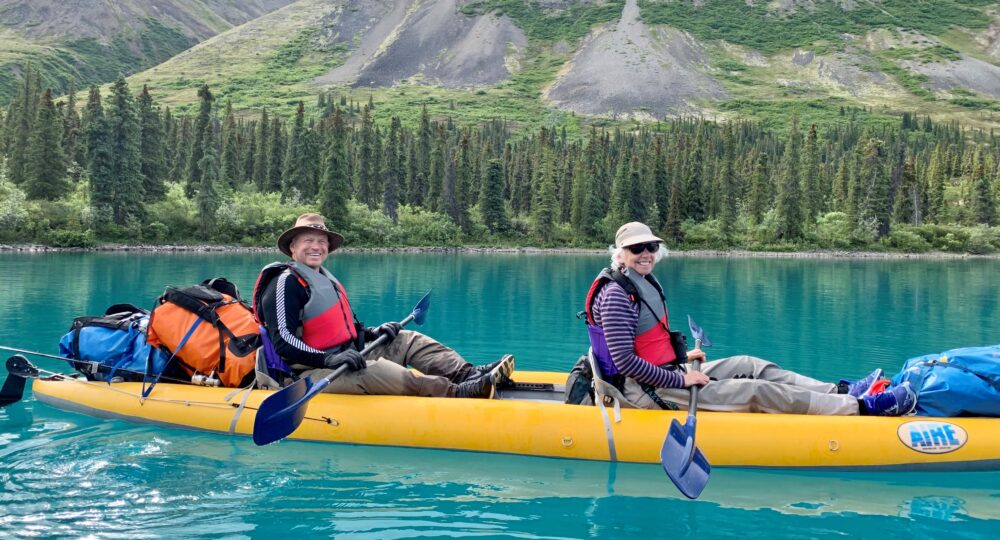
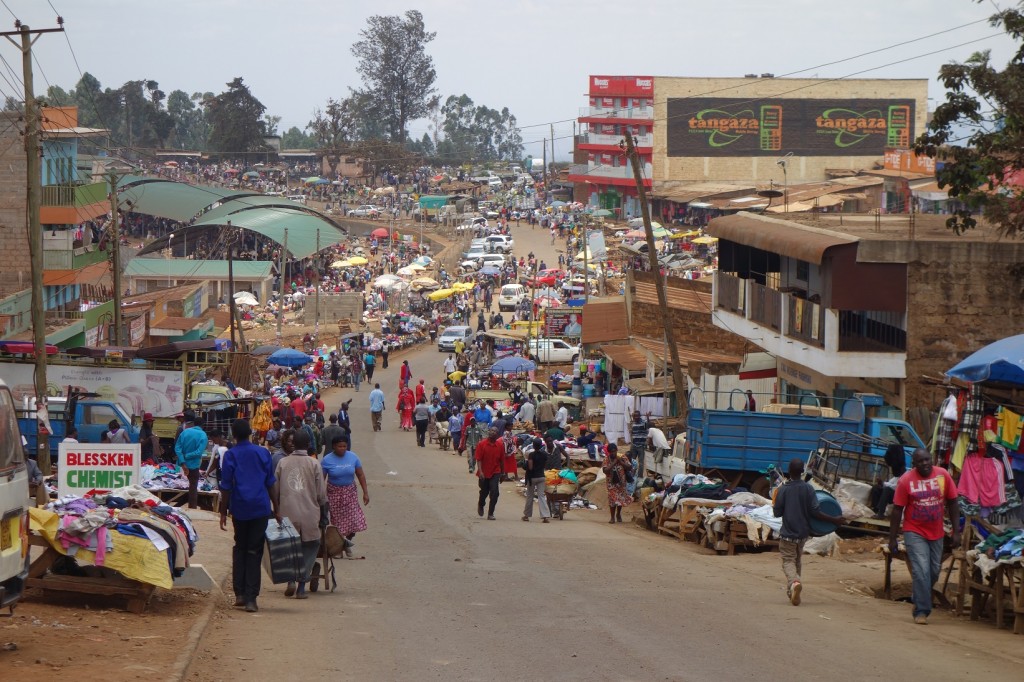
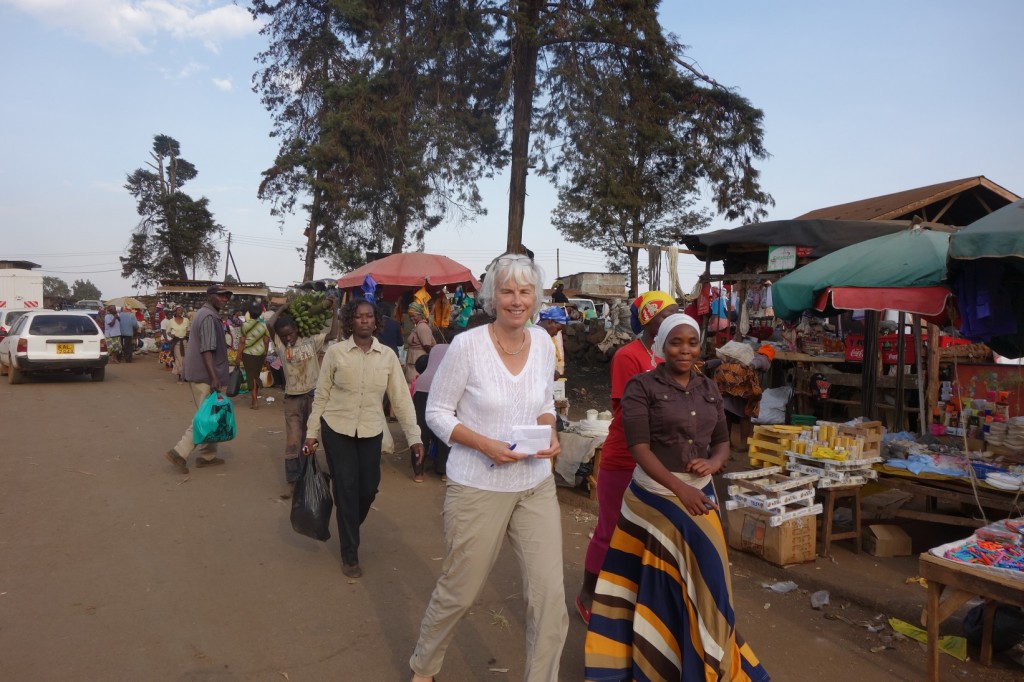
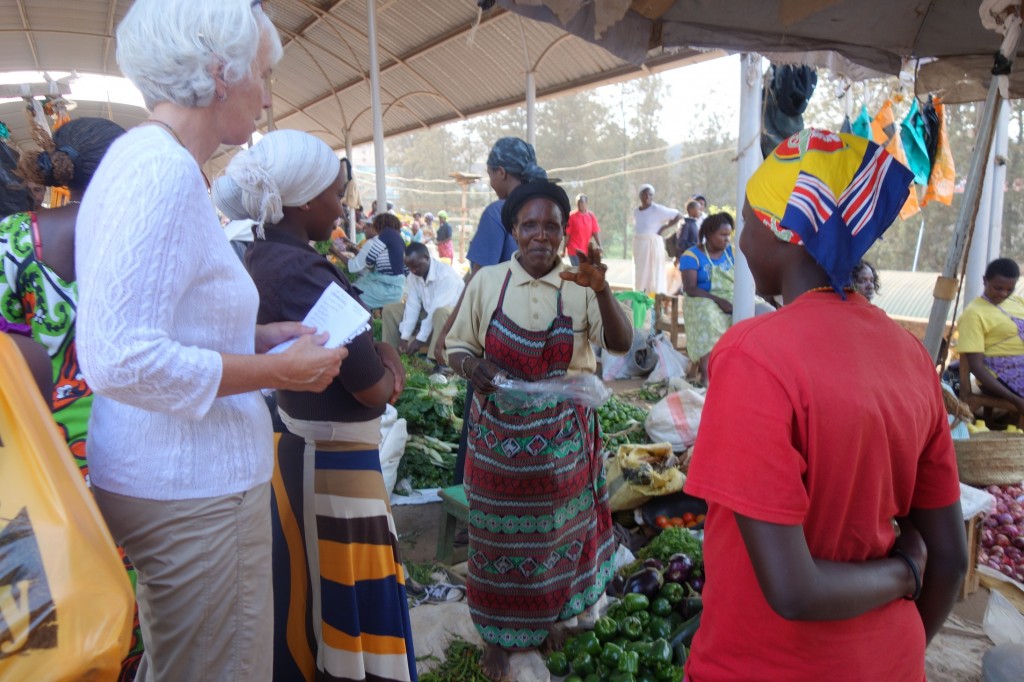
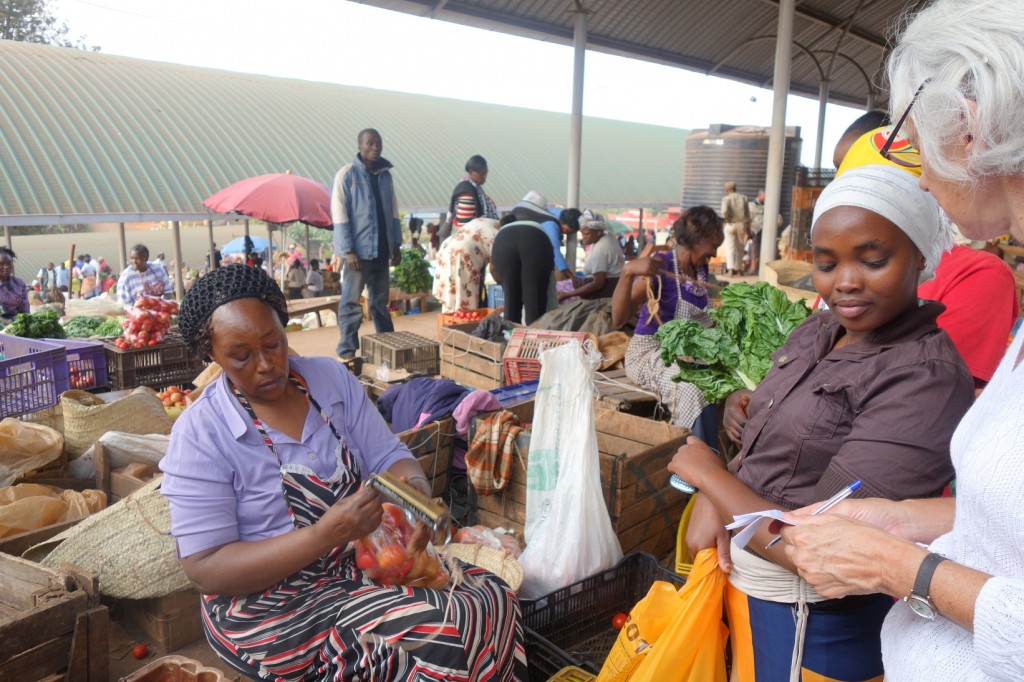
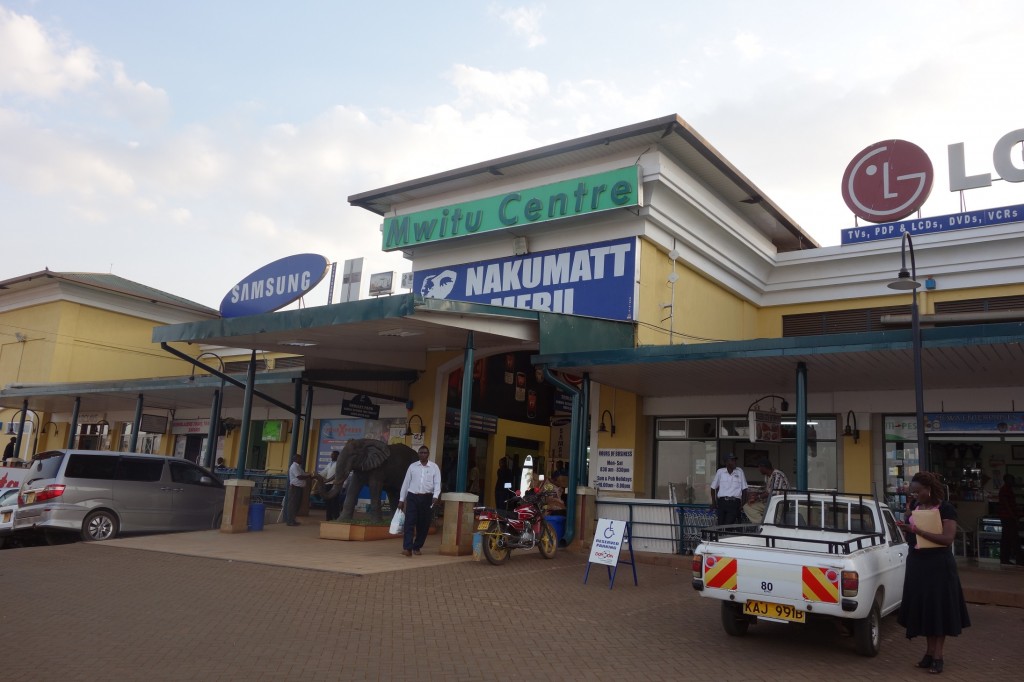
Do you have refrigeration?
We do have refrigeration, though we only have power from 6:00-9:30 am and 6:30-10:00 at night so we try to open the doors as little as possible during the day. It seems to be working OK so far.
I wondered how you kept food fresh. Do you get ice, or at least cold beer? (grin)
Having the refer on a few hours a day and then leaving the doors closed it acts like a cooler. We do have a freezer but haven’t made ice yet. (no ice tray) but we buy frozen meat and it stays frozen until we use it.
Looks like a day of shopping in Ortonville! 🙂
Is propane readily available? If so, have you thought of propane freezers? Also wondered if solar panels are used anywhere at Lewa?
hugs
I just noticed clear plastic bags are used in the market. Are they used at Lewa and are there any problems/heath issue with the wildlife?
So, all you want for Christmas is a few ice trays? No, seriously is there any thing we can send? Is there any humanitarian project or stuff you or the village or the school need? Something for the children?
Remember, I’m the Mormon and we do stuff like that. 🙂